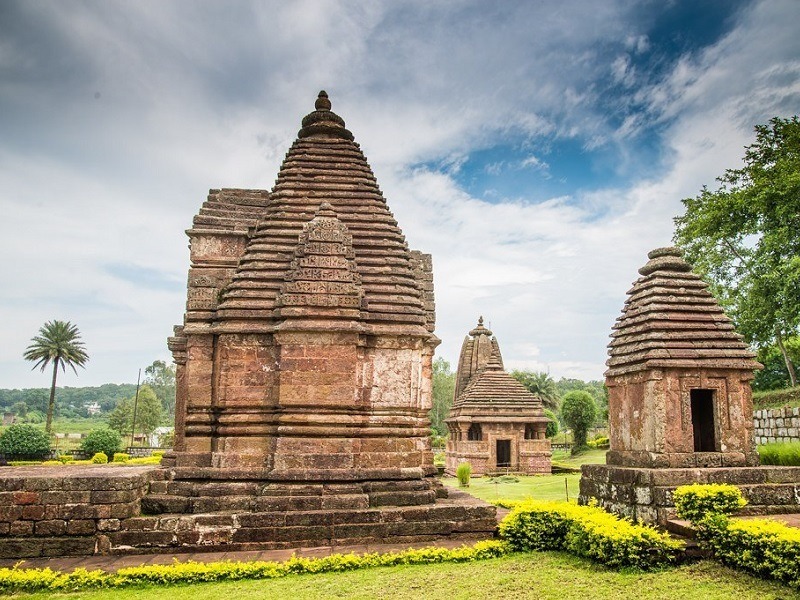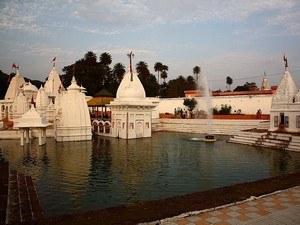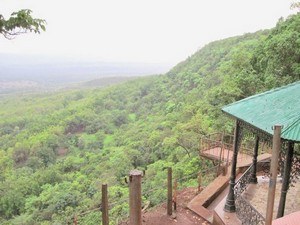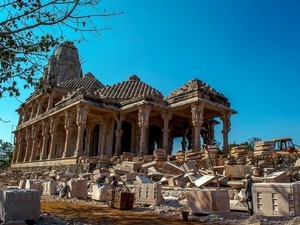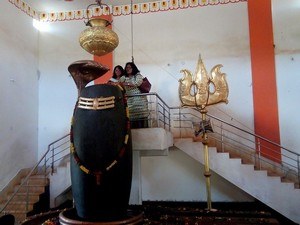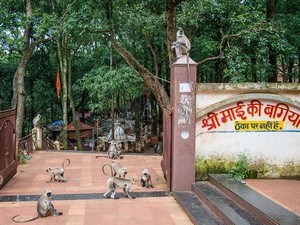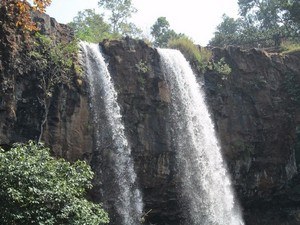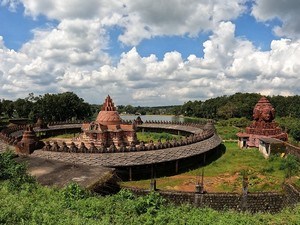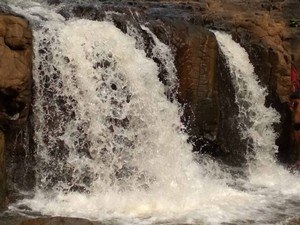Ancient Temples Of Kalachuri, Amarkantak - Timings, History, Architecture, Best Time to Visit
 #2 of 13 Places to Visit in Amarkantak
#2 of 13 Places to Visit in Amarkantak
 Distance (From Amarkantak Bus Stand): 2 Kms
Distance (From Amarkantak Bus Stand): 2 Kms
 Trip Duration (Including Travel): 30 Mins - 1 Hr
Trip Duration (Including Travel): 30 Mins - 1 Hr
 Transportation Options: Cab / Walk/Trek
Transportation Options: Cab / Walk/Trek
 Travel Tips: None
Travel Tips: None
At a distance of 2 km from Amarkantak Bus Stand, the Ancient Temples of the Kalachuri Period are situated just opposite to the Narmada Udgam Temple in Amarkantak. These temples are one of the prominent places of heritage in Central India, and among the best places to visit in Amarkantak.
The Ancient Temples of the Kalachuri Period were constructed under the supervision of Kalachuri Maharaja Karnadeva during the 11th century CE. They reflect the sheer brilliance of the Kalachuri architecture. Today the Kalachuri Temple complex is a protected monument under the Archaeological Survey of India (ASI) and the complex is very well maintained with manicured lawns and landscape gardening. The complex consists of six temples and a kund named Suraj Kund. Karna Temple, Keshava Narayan Temple, Machendranatha Temple, and Pataleshwar Temple were built by Kalachuris of Tripuris while the Panch Math and Johila Temple were of later period.
The Karna Temple, popularly known as Trimukhi Temple, is the largest and the most prominent temple in the Kalachuri Temple complex which is crowned with a towering ornate sikhara. It was built by King Lakshmikarna (1041-1073 CE) of the Kalachuri Dynasty. The temple consists of three shrines built over a raised platform which can be accessed through a flight of steps. The complex also contains several other temples including the Johila Temple, Vishnu Temple, and Shiva Temple.
Machendranatha Temple is believed to be built in the 11th century CE by Kalachuri Kings. Dedicated to Lord Shiva, the temple consists of sanctum, vestibule, and mandapa. The mandapa is supported on pillars and is covered with parapet walls on either side. The vestibule has a superstructure called sukhanasi with a lion statue on the top. It looks like a shorter extension of the main tower. The sanctum is built on Pancha Ratha's plan. An image of Ganesha can be seen on the lintel of the sanctum door. The sanctum enshrines a Shiva Linga. The shikara over the sanctum follows Nagara style and is crowned with two amalakas and a kalasha.
Pataleshwar Temple is dedicated to Lord Shiva and consists of sanctum, vestibule, and mandapa. It is said that Adi Sankaracharya installed Shiva Linga in this temple during his visit in the 8th century CE. However, the temple was built by King Lakshmikarna (1041-1073 CE) of the Kalachuri Dynasty of Tripuri. The superstructure over the mandapa is pyramidal. The vestibule has a superstructure called sukhanasi. The sanctum is built on Pancha Ratha's plan. The floor of the sanctum is 1.4 meters below when compared to the floor of the mandapa. Hence, the temple came to be called Pataleshwar Temple.
Dedicated to Lord Vishnu, the Keshava Narayan Temple was built by Bhonsle ruler of Nagpur, during the 18th century. It consists of two shrines connected to a common mandapa via vestibule. Both the shrines are situated perpendicular to each other. One shrine is facing towards the east while the other shrine is facing towards the north. The sanctum is currently empty. The shikara over the sanctums follows the Nagara style. There are niches on the three sides of the sanctum however all are empty.
Panch Math is a group of five temples constructed over a raised platform in different architectural styles. These temples were built by Gond rulers in the 15th century CE. The shikara over the sanctum follows Nagara style. The Johila Temple is considered as the latest structure in this complex and is believed to be built by a local chief. Built on a raised platform, the shikara of the temple follows a pyramidal style adorned by side transepts on all sides. According to legend, Shankaracharya built the Suraj Kund in the 8th century AD, to specify the origin of Narmada.
Timings: 8 AM - 5 PM
Entry: Rs. 25 for Person



